

CHAPTER 93 Return to index
In conclusion to my essays on the sciences, these are the words that I will speak to the inhabitants of the earth. I have been too long with you, but it was the will of the Lord that I should remain for these many years in my exile among you.
This was to the end that I should come to know you, and to complete the record that I was to leave for the generations. My friend Enoch, the seventh from Adam, wrote out and left his record for all the generations of the earth.
ABSTRACT
This essay defines the fundamentals of nature to speak of magnetic and electric in common day applications with clear insight in how these operate and their effect upon the atomic realm. With further insight how atoms arrange themselves into grids by an increase or decrease in their rotational movement.
KEY
WORDS
Magnetic; Electric; Atom; Movement.
Turns to add to turns
By Figure 1; as the primary is a circular (angular) direction of movement - a straight (linear) movement is produced within the bar. And this is but the beginning, for with a second set of - not electrical, - but simply physical turns at the output, a whole new circular (electrical) movement can be made.
But in order to do so we must continually reverse the polarity of the input motion, since in so doing we are turning the metal bar into a pump, a pump like unto the arm of a steam locomotive, and so; what we in effect are doing is the likes of driving a piston.
That pumping thus is like setting a wheel in motion, in circular motion, which is then introduced into those "physical turns" of wire to act as a whole new set of circular movements known as electricity.
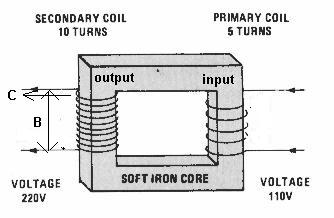
Figure 1: Magnetic frame serves as electrical generator.
If per example we applied a direct current to the turns at the input, we would merely magnetize the bar to set up a linear field within it. The most fascinating part then is that turns are turns, and I am going to repeat it, how turns are turns. And what that means is; -- be it an immaterial coordinate of movement in rotation, or a wire that is but a physical entity wound up in circles, turns are turns. And turns compensate for turns, all because turns are turns.
At the input there are but 5 turns while we placed ten physical turns at the output, and in so doing because turns are turns, we doubled the rate of rotation upon them. At the input the rate of movement is at 110 revolutions per second, while in the output it increased to 220 revolutions per second.
So it shows that electricity is none other than magnetic movement, and that in the circular. For we would not call the arm of a steam locomotive to be a circular object, nor will we speak of the wheel to which it is fastened as the linear object.
And to have a second look at this generator, as in fact it is; we started with no more than 110 revolutions per second, and why then should that coil at the output come to turn twice as fast, when we did no more than pump a rotation equal to those 110 revolutions per second? The answer should be obvious; -- how it is in - turns are turns, physical or otherwise. The voltage thus depends on the number of turns.
But there is more to this for how is there a flow in electricity when it at all times is a stationary power? And yes it is stationary and also a flow of, since that rotational magnetic force has a twofold nature, it rotates and moves linearly. If we keep our eye fixed on any one point it turns in place, but its coordinate, the very format of it extends itself down the line at what we call the speed of light.
And it is that format when it is induced that regulates the speed of its rotation. The armature of a generator is set for 60 cycles, equal to 3600 rpm, while the voltage is according to the number of turns upon the armature.
Therefore at the output in the illustration the rotational speed is higher since there are more turns. From a 12 volt battery in the automobile we raise that voltage to some 50,000 volt for the sparks to occur on the top of the cylinders; that is done by no more than passing that 12 volt rotation through a great number of physical turns.
Here there is no pump as by figure 1, but nothing more than a low voltage send through a much greater number of turns, and turns add to turns. The electrical itself is a string of magnetic rotating at a specific rate, and that rate can be increased or decreased simply by adding or taking away physical rotations; wire would in circles.
These physical turns thus add confirmation to the fact that
electricity is a rotating field of force and at that a magnetic field of force.
It as such has nothing to do with electrons.
If then we question why the voltage (speed of rotation) does not increase at the input over and above the 110 volt rotation that we placed upon these turns, the answer lies in inducement. At the input we are not inducing any voltage, it is merely applied, nor are we adding turns to increase its rotation.
But at the output the continually reversing polarity of the magnetic flow acts like a pump, or a piston on a steam locomotive causing rotations, that is to say; magnetic rotations for it is by and of the magnetic that the rotations are induced, and it does so upon a greater number of turns.
The pump is twisting the straight magnetic lines over one another to become twisted lines of magnetic, the coordinate of which by its very nature becomes like figures of eight end on end, the same as any generator performs with its armature in rotation. Accordingly electricity consists of magnetic lines that are twisted over one another.
What then may the speed of that electricity be? The answer depends on the reference; if it be its collateral at any one place, or its format? The collateral essentially stays in place rotating at its induced voltage.
The format however extends at the speed of magnetic, like in Figure 2 “C” in a straight line if the wire be a # 10 about 10/mm and a wave-length of 70/mm, the circumference is 3.14 X 10 + 70 = 101.4 into 300.000 = 2958 X 70 = 207.100 km/sec.
Then the speed at B if there be 100 turns at a diameter of 50/mm, 50 X 3.14 = 157, X 100 = 15.700/mm to be deducted from the distance in time. And so at the speed of 207.100km/sec it traveled a distance of 207.098 kilometers in that one second.
Magnetic Linear and Angular
Common magnets display a force to push and to pull straight on; therefore these are called “linear” entities even though their format appears to be two circles to a center, These two circles by experiment are found to be a single circle laid over to resemble the pattern of an eight. The reference here is to figure 2 the lines from X connect through to Z, and A to H.
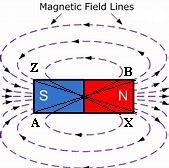
Figure 2: The pattern of magnetic lines are by a figure eight of force.
Then comes that angular magnetic force better known as electricity, and for that we look to a standard generator in which there are field coils producing a linear flow across an open area in which an armature is placed that by its rotation comes to twist these normally straight magnetic lines over one another like as one would braid a wire or twist a rubber band.
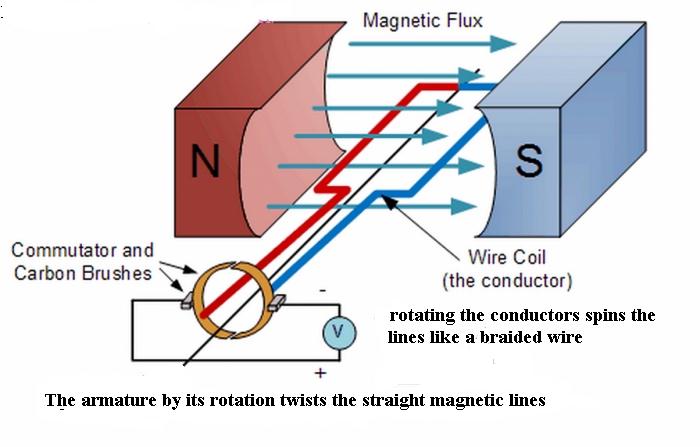
Figure 3. Linear magnetic by rotation producing an angular magnetic force.
These twisted magnetic lines then are a rotational magnetic force, or also said, angular magnetic force. As long as the armature keeps turning that rotational magnetic force will continue to be of power. At any instant when the rotation stops so the electricity is also gone. The force of electricity thus can only exist as long as we continue the rotation.
Figure 4 then illustrates the pattern of that rotating magnetic force also called electricity. What it amounts to are figure of eight end on end, each one figure of eight, or twist as it might be said is like unto any other magnet with the exception that these are in rotation and connected to one another at their equatorial areas while their polar ends face outward and thus as they turn they alternately bring their north and south to the side of that string of force.
If we place any magnet next to a single conductor of electricity the wire will push and pull itself to and away from that magnet as illustrated here in Figure 4.
Any electrical current will push pull itself to any one pole of a magnet simply because the current at its sides consists of magnets linked end on end. When the magnet is placed with its equatorial region to the wire it will no longer push pull because the polarities of the wire are no longer facing any pole but a single flow of movement. All this is easy to prove to oneself as the illustration shows.
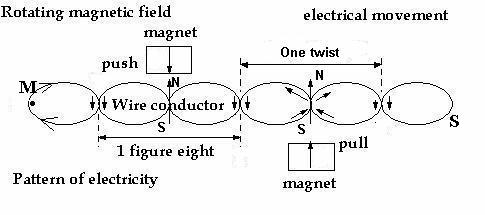
Figure 4. The format
of electricity, properly termed rotational magnetic force.
The rate at which a conductor will vibrate to any magnet is directly proportional to its voltage. A nine and so on, because voltage depicts the rate of rotation, while ampere depicts the degree by which it quells, the degree of power or load placed upon it.
Then
from point “M” to point “S” there is one continues movement, that goes
from the top of one half to the bottom of the other half of any one twist and so
continues on to the next one. In a single line it appears as a wave, and from
“S” the direction is in reverse going from “S” back to “M”. The
movement of its format thus completes a circle going both directions along
that string of force while it rotates.
This is then called its “format” or “coordinate” that when switched on extends itself at nearly the speed of light, as shown earlier. The whole of the line however does not move, not to the right nor to the left but simply rotates in place. Therefore ampere is not a movement, but the best of terms for it is “to quell”.
Nor can we say that its movement is in one direction as we erroneously do with ampere since any linear movement upon that string of force is always in two directions, and these at all times rotate at the speed that we apply upon it.
To quell then is obvious since all magnets do that, like our earth is quelled to a center, and that from all directions sothat it became like a ball, a sphere. And all planets and stars being magnetic are in the shape of a sphere, and even atoms are like spheres except when they are driven to a high speed of rotation when they expand their format taking on the shape that is more oblong something like a disk.
Magnetic force always draws to its equilibrium. On earth it evens out at sea level wherefore the pull of g is less at the top of mountains.
This explains electricity in the first of its twofold nature for when we come to the ends of the conductor, the ends that we utilize whereby to connect to, and power our appliances etc. We then have taken on this habit to refer to these ends as being positive and negative, but they are never as such positive nor negative, but simply counter rotating movement.
t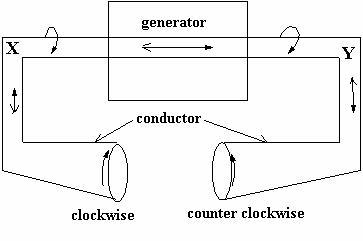
Figure 5; The counter rotating movements at the ends of a electrical circuit.
The circuit in itself is of a single rotation in the whole of the circuit like in illustration figure 5 from X to Y is an overall direction linear as well as angular, but when we bring the two ends of that rotation facing each other one will be in clockwise rotation with the other in a counter clockwise rotation.
As then I said for that electricity to move down the line in but a single direction of movement, that single direction exist only when the circuit is completed or turned on when the “format” of that force extends itself down the line.
If we laid that conductor to encircle the whole earth five times over it would last only a single second. And as it goes down the line at that speed it simultaneously procures for its two basic directions of movement as shown earlier. The single direction of movement in electricity thus is only for a fraction in time when the circuit is completed. (Switched on)
The two ends therefore never draw towards nor away from each other, but rather when touched upon these will destroy each other, each one attempting to drive the other after its own fashion. We then make use of it just as we do with our cars placing transmissions between the engine and the drive shaft. In the electrical that transmission consist of turns, physical turns of wire to compensate for the two opposing rotations.
Too few rotations will burn out the coil, and too many reduces power.
Conclusively there is no push nor pull from what is positive and negative in
electrical nor will they ever adhere.
While then there is a push and pull from the electrical at their sides and termed north and south these likewise can never adhere to one another, nor draw away from each other because they are always in rotation pushing and pulling on other magnets.
What they can do as such, and are always performing is to light our
homes. That current as it is passed upon a filament causes the atoms of that
filament to vibrate so increasing their speed of rotation by which light waves
are instigated.
The
voltage of any conductor then can be found by counting its rotations by any
voltmeter, or we can count the back and forth movement of a conductor held next
to a magnet. Each push-pull is a single rotation as the north and south polarity
of that magnetic field faces the pole of the magnet.
Energizing

Thus far I have shown electricity as a string of force consisting of braided magnetic lines in rotation, the basic form of electricity. Then comes that which may be energized by it that is often taken as were it the electrical all the same. But that is not so, when electricity is passed upon a filament (light-bulb) it energizes that metal that then produces the codes known as light.
The same is true for a fluorescent lamp the gas is energized that then upon the coating again produces the codes of light, and no less in the old TV tubes. The codes that are instigated by an electrical current are in all respect distinct from the current itself.
When a low pressure air or gas is energized there is always an anode and a cathode, meaning two points where the rotating magnetic field completes its circuit. As therefore a cathode tube is energized there are two opposing rotations within that medium free to move around.
And as such we cannot compare that to any one conductor, because in that case we are not talking about the current of electricity as such but we are speaking of the “transmission” that we placed between the two ends of a current. And these do not necessarily behave as the current feeding the transmission. (two men looking at each other is different from two men wrestling)
From a 12 volt battery in our vehicles we utilize a coil, that is to say many turns of wire as a transmission between the two counter rotating ends at the battery whereby we can raise the rotation to some 50.000 volt to create a spark at the plug in the cylinder. Here we are using turns of wire for a transmission, in the cathode ray tube it are the atoms of the gas.
A “transmission” thus is distinct from that which it appeases, and cannot be considered as one and the same. Even as we do not judge the nomenclature of a gasoline engine by the nomenclature of the transmission so we cannot interpret the physical current of electricity by what goes on within a cathode ray tube.
Within the tube the rotations being in opposite direction of one another the transmission is played out upon the atoms of that media.
Diode principle
Another example of the rotation in electrical conductivity is found with the diode. By figure 6 at “A” the incoming counter clockwise rotation of the current passes through because the medium within the diode is itself of a counter clockwise rotation.
Or to put it another way; the coordinate (overall pattern) of the substance by its atoms in the molecular form have a rigid rotation that just like any two magnets allows only one direction of movement.
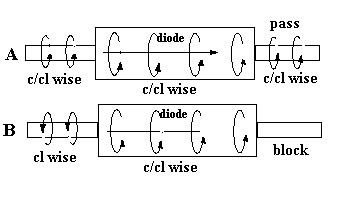
Figure 6. Passage blocked by reverse rotation.
Just as the ingoing movement of the south end of any magnet will conduct the outgoing movement of the north end of another magnet so these are conductive.
But in
reverse a south end to a south end are movements in opposite direction of one
another for which reason the conductivity is blocked, or as normally said to
repel from one another. At figure 6 “B” therefore the clockwise rotation
cannot pass.
Winding
a charge of electricity

What in all reality happens when we charge a battery? Well; since electricity is rotations all we need to do is add rotations and cram as many as we can into a container. The current in a battery is not in two parts isolated from each other, but a single charge that is isolated by the poles on top of the battery keeping the circuit open.
Some of the old clocks and toys had springs that were wound up, that same principle applies to electricity. When charging a battery we are in effect adding turns to turns until it can take no more turns. And when the turns are depleted the battery is empty. It is that simple, the principle that is.
Transmissions

From a high rotation to a low rotation we utilize transmissions. Any motor connected to the poles of a battery, or to an outlet in the wall, serves as a transmission for the electrical potential. Why then do we call them motors and not rather transmissions, for all that we connect between the poles of any circuit acts as and serves as a transmission.
Any direct connection would disintegrate the two points since in that case these two act like two grinding wheels in opposite direction of rotation of each other.
Electro-magnetic

For some reality into our vocabulary, there is no linear found in electrical, only magnets are so enabled. If then by cunning we will answer; that it is "electromagnetic", we ought first to show that bird, if there be any wings upon it to fly.
Magnetic is
linear while electro is angular wherefore to say; "circle-linear, or
straight and around"; the reality of electromagnetic, these in all respects
show -- not one bird, -- but two birds on the
move. If I am walking forward in a straight
line - I cannot say that I am walking in a circle.
As
a single word electromagnetic does not exist, but electro-magnets exist, but
then again to say electro-magnetic it as such has no reference, for either we
are speaking of electro as electricity; the angular magnetic force, or we are
speaking of magnetic having our reference to the linear type of magnetic. Just
as a single sided coin cannot exist so electromagnetic has no place in our
vocabulary.
Fundamentals
of Magnetic
Fundamentally all magnets for their power are circular movements that for their specific coordinate also turn into linear movement. By illustration figure 7, it starts out with eternity; that is to say with a circle in which there is no end, nor any beginning. Like at "A" a circular movement, one that always returns to itself. But to what use is that circular movement if not from and by it we can instigate a linear movement as well, that is to say to have birth of it.
For
when that circle is twisted half way over as shown by Figure 7 "B" it
not only resembles the figure of eight, but is an eight in power and movement,
and as such still an eternal entity for its fundamental scope has not changed
other than that the one has become dual, and still one and the same,
but with this advantage that it has a center, a common center to which, and over
which all of its movement proceeds.
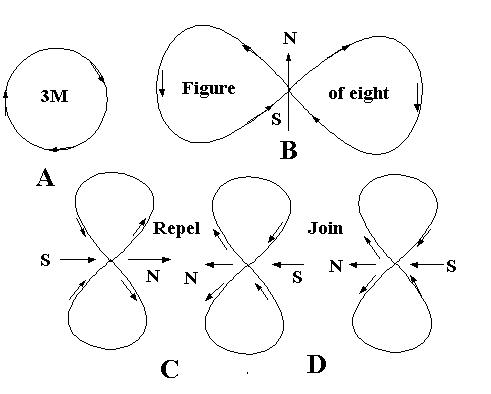
Figure 7; The eight of movement, fundamental in all things.
This then brings forth and/or provides for two phenomena. Number one: illustrated by C and D it instigates linear movement. At one end of the eight there is a incoming movement while at the other end there is an outgoing movement.
And since this fundamental movement that God created is
conductive these will adhere to one another. But more than that they are directionally
conductive, where at opposite directions these will repel from one
another, but at like directions adhere, or join with one another
Number two in this grand figure eight of force is the fact that it will quell, it will drive all that is found within its embrace to its common center, that as such is a center of center, also called the bottomless.
By this unique feature all
planets and stars are driven to spheres, for since this circle in eight always
comes in multiples of itself each one draws to the same center from any and all
directions. Break a magnet in half and it will find two new centers, or in
a dozen pieces to a dozen centers of center.
As
therefore that grandiose movement is at all times everywhere and binding the
eights to any and all local formations, so within a star a great number of local
formations of eight may be found. Just look at the sun, and by its flares how
very potent these magnetic lines of eight are to quell even that hot burning gas
to itself, and no less for ourselves how we are drawn to the surface of the
earth.
The atom under
scrutiny

Now
let us have a look at our atom and see how these subsist in the scheme of
nature. It is said that the core consists of protons, of particles that are
electrically charged, and that they as such have only the positive side of the
charge.
But how can that be since any electrical charge is but a single entity of a single direction of rotation that for its ends are always in opposite of one another, always positive and negative. It simply is not possible for a man to have a back and no front, or a sheet of paper to have but one side.
Any one standing or rotating movement has, and must always have two ends.
There is no such thing as a line with but one end, nor a charge with a one side
and no other. Any one end is simultaneous with its other end.
If thus the nucleus is electrically charged these would most certainly destroy one another, or if their circuits were not completed there would be nothing since electricity is only effective when the circuit is complete.
At no time will electricity be found or be useful unless and until it is a complete circuit, its format in a complete circle, just as anything magnetic is by full circles.
Cut the circle and you will have done away with eternity, that is to
say with magnetism inclusive electrical as a derivative of it. Nor would these
neutrons being neutral serve as any transmission like we do with coils of wire.
And so how is that core held together? It cannot be electrical or each proton would have to be a full fledged circuit, and in having both polarities without any transmission it would destroy itself. We then invented something called “a strong force” but what is that force?
If we cannot define its nomenclature we are merely
fishing in a pool with no fish. No
force of any kind will make peace between the counter rotating movements of
electricity other than a transmission, such as we discussed earlier.

Figure
8. Magnets on a pile.
If on the other hand we gave them a magnetic nature they would be like figure 8, magnets clustered together in a pile or sphere. But then we cannot say that protons are positive since the terms are north and south, not positive nor negative.
Nor would it be wise to have the atomic core as individual magnets, since any good jar upon them would scatter them, like impinging upon the blade of a jet engine.
Even the magnetic atoms of steel that hold better than any substance
can be shaved off as we do with a drill and a lathe, or a rock smashed to
pieces. If thus there is a limit to their bonding, how simple would it be to jar
an atomic core with their simple minute bonding to pieces.
No, there has to be a better way, and we will come with the same conclusion when we consider those so-called electrons. These electrons with an electrical charge cannot be only negative, these too must have both sides of the coin as dictated by all that we know of electrical.
It being the very norm
and law of nature for any and all entities to have both sides of the coin,
a front as well as the rear, and the top exists because it is simultaneous with
the bottom. And where there is an
outgoing direction of movement it is always coincidental with the incoming -- as
it is unmistakably shown to us by not only
all magnets and its derivative termed electric but by all of nature.
This is absolute that any one direction of movement is like an arrow that when it goes somewhere it must also come from somewhere. As thus there are always two ends in any single entity, in the electrical when one is compared to the other these not only appear to have opposing types of movement but by logical consequence must always be in opposite direction of rotational movement.
Always be so called negative, and so called positive
because the terms as such are no more than a point of view, each
one can be called by either. Why should clockwise be positive, it can just as
well be termed the negative type of rotation.
Conclusively the
atom can never exist electrically, that all in itself defeats the whole
norm of the atom, it as such cannot possibly hold on to its own parts let alone
join with any other atom. Then for
an alternate to grant the atom a magnetic nature we at least stand a fighting
chance but it cannot be a system with multiple particles, the core
alone would not hold together.
And for any whole
entities to encircle the core like planets around a star, they would have to be
far enough apart and never cross each other, and never at all impinge upon a
turbine blade. And I recommend that no lighting bolt ever strikes or they would
all fall apart, since such systems can only survive with no outside disturbance.
Drop that pile of magnets in figure 8, and they will scatter.
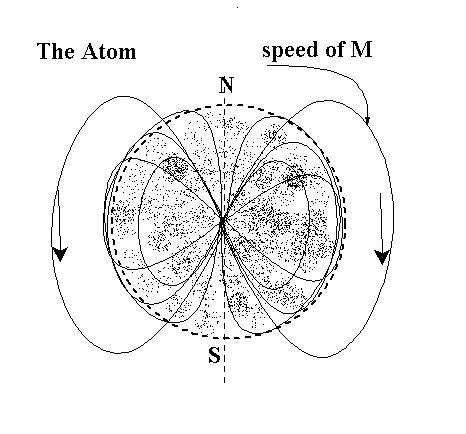
Figure 9. The
magnetic atom.
But even then what good is that kind of an atom when as such it cannot hold on to any other atom; - that it does not have the greater linear power like regular magnets have to join with one another as well as to stay aloof from one another?
The atom as a whole single entity (figure 9) would hold itself perfectly
together without the need for any other force strong, weak or otherwise.
All because the
magnet for its unique eight of force is a one of a kind force, and one of a
kind coordinate, it is unlike anything else in
nature, uniquely designed to quell everything within its embrace to a
common center as seen with all planets and stars. And it has the much needed
linear power by which to join with all other magnets in a most perfect
fashion.
Conclusively the atom does not correspond to any type of planetary system. It as such cannot possibly bond with any other atom. Nor does it consist of particles by which certainly it would fall apart, and the aggregate that I have drawn within it calling it “finite dust” is not consistent with the norm of particles.
But at this time I do not want to go into what it really is since
that reality is as yet somewhat vague in my mind, and I do not want to teach
something I am not sure of, moreover it goes too deeply into the deeper
fundamentals in how all things come about.
Thus by all laws and evidence in nature it is impossible to have a single sided coin, nor therefore can positive and negative ever be separated - even as north and south are never separate, anyone of them exist only because and by virtue of the other.
Fundamental
observations
Then let us look into some of the other fundamentals in magnetic as well as electric, which is to say, to look into the linear as well as the angular of magnetism. Much of it boils down to angular verses linear movements and visa versa each one able to create the other with this addition that not all movements - but all “fundamental” movements are in the nature of magnetic.
When we heat water it turns into steam, but what is steam and why does it take up more room? Steam is still water but with its molecules driven apart from one another –the cause of which was the increase in their movement, an increase in their rotational movement whereby their fields of force expanded.
When for
example we increase the rotational speed of electricity known as voltage; to
some 220.000 rev/sec., the power companies (figure 10) hang these conductors on
long porcelain holders far from any metal, whereas a rotation of a mere 120 volt
may be protected by a thin layer of insulation.
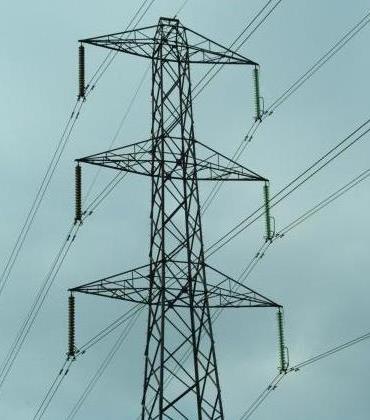
Figure
10: The high speed of rotation expanding the electrical format forces them to
be placed far from conducting materials
As
thus the rotational movement of the atoms of the water molecule are increased to
where their magnetic fields are expanded to the point that the liquid becomes
gaseous it is seen as steam. And how do we use that steam? We can use it like
any pair of magnets, for when we push two magnets with like polarity together,
and then let it go, one or both of them becomes a projectile.
And that is the power of steam, trillions of tiny magnets driven together that when released drive the piston of a steam locomotive, that in turn provides rotation to the wheels in order that the train may take a linear path.
But no less for the gasoline in our four wheeled toys where
the spark (a high movement) provides the momentum for a chain reaction to occur
upon all the molecules at the speed of light taking on a high rotation whereby
the molecules are rearranged all of them demanding room, that in turn drives
down the piston to the further rotational movements.
And
look how strong these tiny magnets in steam can be, for when we drive them back
into each other, pressurizing the chamber, it is imperative to have a safety
valve or the tank will blow to pieces.
And why is steel held together so well if not for the complexity in the figures of eight binding atom to atom, or butter parted at the touch because their coordinates do not line-up with polarities in a straight forward manner as those of steel.
Then those of a rubber band wherein the atoms and molecules do adhere
well together, yet like any two magnets these may be pulled apart - and again
unite once less lose to do so.
Molecules
on the other hand do not rotate, these are either held rigid or float freely
along one another, and the lighter the element the greater its expansion may be,
as we should well know by forming water from two of H and one of O, as well as
the tremendous reaction of a hydrogen bomb.
The larger atoms then for any expansion have this against them that their fields are in multiples serving as a brake towards that end, that on the other hand grants them greater power by which to adhere to one another.
When steel is heated in
contrast to water its expansion is little to nothing even in its molten state; -
all because when something is held from eight or more directions simultaneously
to a single center it is not likely to expand as do those with a mere two points
in their rotation. Nor therefore is magnetism in need of a strong force.
Speed
into temperature
When on a cool dry day we scuff our feet upon a carpet we create rolling motions that curl themselves around our bodies. And since fundamental movement is magnetic that rolling motion upon us is none other than electricity in the static form. Touch a metal doorknob and one will discharge that electricity upon that doorknob by a visible spark.
Or when rubbing one’s hands together it too
effects a rolling movement to the atoms in the skin by which their rotational
movements increases in velocity, that then is not only interpreted as warmth but
is warmth. Slow down the rotational movement upon the water molecules and these
become ice.
Curious
now how by a mere change in velocity these molecules come to lock onto one
another, and that in perfect grids. A mere change in velocity causes us to feel
warm or cold, and a mere change in velocity redirects the magnetic polarities of
the atoms in the water molecule to lock onto one another and at the same time
keep aloof from one another depending on which polarity is facing which.
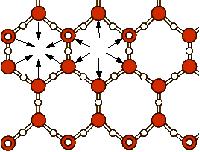
Figure
11: The direction of magnetic movement within the grid of ice.
As the rotational movement in the water molecule is slowed down the magnetic pattern changes, for one the hydrogen atoms readjust themselves to lock to their host in the more conventional manner, one polarity facing its host with the other open to lock unto any other host.
And
the oxygen atom readjust its magnetic design in such a way to lock onto others
in three to four ways, (three in ice, four in glass) therefore it forms these
grids as shown by figure 11.
Within these open circles the direction of movement of all the six oxygen atoms are to each other creating these open area that then alternates for the next in line as indicated by the arrows drawn within them.
Figure 12 illustrates a section of that grid showing the polarities of each atom. Note also when the movement is at room temperature the two hydrogen atoms do not line up directly in a horizontal or vertical plane, but offset per illustration.
But with the temperature below zero they appear to be in a straight line between oxygen atoms, even as drawn in the illustration. But in reality the main power line or link between these oxygen atoms is not directly to the center of them, but somewhat offset to their original position.
Figure 12 does not show
that, nor have I ever observed that fact, but I know or sense it to be so.
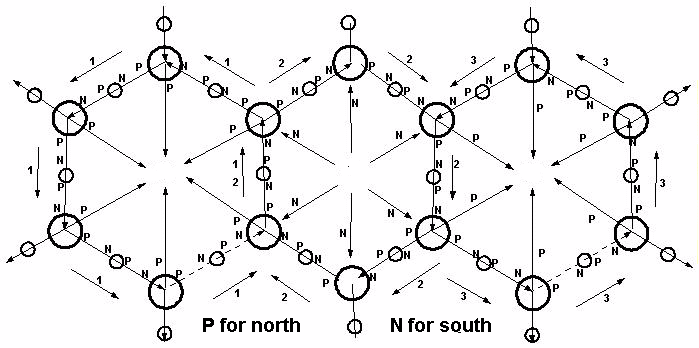
Figure 12. Atomic grid by magnetic
Our magnets then, those that “we produce” are very simple and usually display but a singular format. The atoms in nature however (in the way that they are formed and continually maintained) are by their rotation far more unique capable of complex formats.
And yes there
is more to this that would land us in the realm of what is yet more fundamental
like how and why the atoms come to their rotation in the first place, and by and
in what the varied speed of their rotation comes to change their coordinate, or
pattern of movement (as it can also be said), or the shifting in their
polarities.
Then there is this secret how and why
magnetic movement is conductive, for when a north faces a south the direction of
movement is the same yes; but how and why do these draw into one another? We can
understand being conductive to join, but that in itself does not explain for
them to gain upon one another. There is of course an answer to that secret that
someone will define.
The lighter now the element so much the simpler it is, but as they increase in size like those of steel or gold their magnetic nature is truly a miracle in design. And for the oxygen atoms their magnetic format is also truly a masterly created piece of machinery.
When that H2O is at room temperature the oxygen atom directs its main polarity to but two directions, or rather a single direction locking unto one hydrogen atom with an outgoing movement (the north) while it locks unto the second hydrogen atom with its ingoing movement called the south.
That then
is putting it plainly since there is more to it in-that these hydrogen atoms for
their simplicity come to a full embrace holding themselves extremely well to the
oxygen atom but with no polarity showing to their outer perimeter. Therefore
these 3 can serve as a single molecule and as such float freely around one
another.
This then is true for all atoms in a multitude of different ways at different velocities of their rotational movement each by their own unique design that varies for size and complexity. Those of steel for example are very complex whereby they are so well able for strength and other factors able to endure very high velocities before their integrity is compromised.

The oxygen and nitrogen atoms in air having a medium complex cannot be singular or our air would be solid, therefore these come in pairs locking onto one another like man to woman, a single entity in the format of two.
Under normal conditions their
polarities are in a complete embrace having no real polarity protruding to their
perimeter wherefore they float freely along one another. But even these when
their rotational movement is slowed down greatly their format will open up and
will come to cling to one another appearing like ice or snow, air becoming a
solid.
The change in the rate of movement
changes just about anything, like baking bread, or cooking potatoes, changing
paper into ashes, and gasoline to break up its molecular structure. In the one
it hardens things, in the other it soften things, all by heat, the rate of
movement, some go slowly while others in an instant.
Within a rubber band at certain temperatures these magnets hold to one another with some degree of strength. And when we pull on them to stretch the rubber band we in all reality are pulling magnets away from one another with their fields still holding.
Therefore when we release the band it is just the same as when we release two magnets to come together again. And just as there is a limit to how far these can be pulled apart before they will no longer return, so it is with the rubber band.
Then if
we slow down their rotational movement these will become brittle and no longer
stretch, the magnetic atoms no longer joining in the conventional way, all
because of and by the rate of movement upon them.
And so there are a million ways in
which the atoms in their magnetic nature form loosely, or rigidly, strong or
weak, open or closed, etc. Nor are these million ways (figure of speech) with
atoms alone but along with their molecular infrastructure.
The ability of the magnetic eight of force is however yet far more unique than what I have thus far shown and some of it has to do with how these are formed, how in the first place a simple circle of power comes to a figure eight in design.
As then many years ago I vowed not
to reveal the intricate ways of what is yet more fundamental than the foregoing,
I will at least reveal this much; that when the circle of force is fully laid
over (turned) by 90 degrees so as to fully resemble the figure of eight, it is
at the peak of its polarity or linear power. (This will give us a hint)
By any degree less than that its linear power is reduced, or as I might say hidden, like the atoms in air to display themselves neutral to one another, or in the molecular form like unto the molecule of water, the combination of three atoms shading their polarity towards and from one another.
All these variations then are made and/or compromised by
speed, the velocity in their rotation. And yes that is at least one factor of
it, the other digs yet deeper into the fundamentals by which all things come
about, something not as yet for publication.
I now could go on
and on with examples, but let this be sufficient. It indeed bothers me that
while it is easy to understand nature, it’s not easy for me to teach the same,
and because of it my readers or pupils loose out on much of the true beauty of
it, the deeper finer realization. But I am that I am, nor can I change.
ANGULAR
MOVEMENT
It is believed that
atoms do not rotate. Then answer me
what do the electrons do, they just sit around idle? If indeed the atom was a
planetary system then there is rotational movement in the atom, and that by our
own laws and theories. Wherefore in this we are contradicting our own selves.
Then there is that spinning top, the gyro to put us in the wrong since it provides for inertia, angular movement providing inertia. If not so then we are claiming Sir Isaac Newton to be a liar in his laws of motion since he clearly indicates to “SQUARE” the force upon a particle in motion.
In other words; he is telling us to compound the linear inertia with the angular
inertia. If then there is no rotation in the atoms there is no angular inertia.
And if there is no rotation in the atom why do we slow down to take a turn with
our automobiles? If so we could take the turn at twice the speed, for with only
linear inertia the force is never squared. Our insurance companies alone already
put us in the wrong.
Or why does it require a force to move a stationary object if not for its inertia? And where did that inertia come from? As a stationary object it does not have any linear inertia. Inertia comes by movement, and by movement only, the movement in or upon any mass be it angular or linear or both.
Also if there were no
rotational movement in the atom we would have no weight at all since then there
would be no gravity. (Ref 1) But since that line is hard to understand without
my essays on gravity in the various journals I need something more simple by
which to convince us.
All the evidence in nature proves quantum mechanics to be no more than fantasy even as relativity is fantasy. I am not one to go by fantasies, but by reality adhering to the laws that nature in itself sets for us. But that line also is not simple, and so what happens to water when it freezes?
How does it form the grids? What is heat or cold? If the fields of force upon the atoms just above a hot roadbed did not expand why does the light refract? If they had no rotation why would they distance themselves from each other for nothing more than some warmth of the sun?
Or how is it that we can see things and that in color? A stationary object
(atom) is not going to spin out wavelets at different lengths whereby we have
eyesight. And what of the growth of things, stationary atoms do not grow apples,
nor the hair upon our heads, nor would these divide things to form cells and
whole bodies.
We however have an erroneous understanding of the atom, not only that it cannot possibly be a planetary system, but even in their magnetic nature as magnets as if they are some solid parts, as if they consist of dust. But did we not know that God created all that is visible from the invisible, and all that exist out of nothing?
If then there was nothing – how does one get parts?
I know; I am getting carried away for the Almighty Lord said “Keep My
secret you that are kept by it.”
And so in your mind consider that atom having a medium that is not in the norm of particles. But what it does have is movement, and that movement is classified as a fundamental movement, the second as such, and best known to us as magnetic.
That then comes in the form of a circle of movement by the design of an eight,
and it as such rotates in addition to the movement that proceeds by that figure
of eight. And so it is not as if the whole atom rotates but its format, its
coordinate rotates, and must always rotate, only the how and why to that I am
not allowed to reveal. I am already saying more than I should.
Like as each twist
in the braid of electricity rotates as it connects to the next figure eight in
line and stays in place so the atoms in all substances join with one another
with this difference that while in the electrical the joining is at equatorial
regions, in all mass it is mostly at the polar regions.
Consider two magnets
how it is that these will pull to one another, if it were not a moving
something, call it lines or whatever, how do these move towards one another if
these atoms in their individual movement did not conduct that larger coordinate
over and upon them. Or; that larger coordinate would not it for its movement
cause these other individual coordinates of each atom to rotate as well?
I am speaking far to much, and in some things I have given us a reflection of what is factual all in order to get us away from the idea as if atoms do not provide inertia that can only come forth by angular momentum. And yes it is hard to believe and intriguing that what we behold as solid is made up and sustained by what is not solid as we understand solid.
Energy
Fundamentals
What
is motion, and what is energy if not one and the same? No mass of any kind
presents any sort of power unless and until it is put in motion, or if it
contains movement. A spinning top for example has movement yet stays in place
because its movement is in the angular, whereas a mass on the move in the linear
presents that power that once in motion stays in motion or in direction of
movement.
Linear and angular are the only two types of movement that can be found in any combination both presenting power. Therefore did Sir Isaac Newton declare to square the force of any part in motion, compounding the angular inertia with the linear inertia.
The angular is the ever
rotation of all atoms, and as such the “angular inertia”, the linear is all
movement that does not return to itself. When
therefore a mass is set in linear motion, it compounds itself upon the ever
present angular inertia. Therefore in the calculus is the force to be squared.
As
then it is said; E=mc2. and a quotation that goes with it: "Energy
(E) equals the mass (m) times the speed of light (c) squared. This is the
relationship between the energy of a particle and it's equivalent mass. This
is only true if the particle is not moving."
There are two errors
here, first; if the mass is not moving it has no energy, no power at all, no
means to present any type of force, with this exception for the angular inertia
of that mass simply to stay in place, and requiring power to be moved.
These are basic laws that cannot be defeated. And second: this also is a law of nature that; “Nothing can move faster than the speed of light, or of magnetic as it may also be said.” The energy (power) of a particle then can be its weight (angular inertia) times its velocity (linear inertia) and that squared since it compounds two separate inertia’s, but never at all the velocity of light squared.
That my dear
reader is plain common sense, for to square the maximum velocity exceeds the
maximum and violates the law that nature itself imposes upon us.
As then the speed of light is to that
of sound so even the speed of light is but like that of sound when compared to
that which resides in the none physical realm, the spiritual realm as one might
say.
The atom thus in its whole is a single entity, or single part if you will that can be broken up, or restructured into what becomes different elements presenting different coordinates. And that so called radiation that escapes from unstable atomic coordinates need not be particles.
But more in the way of wavelike
coordinates, something similar to X-rays that can harm and/or destroy human
tissue. For when taking poison it is not as such the atom that kills but its
coordinate, its pattern of internal or overall movement that rearranges other
coordinates with or without fatal results. How for example does blood pick up
oxygen atoms transporting them to the cells in our bodies, and then what? If
these atoms were dead parts, no movement, how do they maintain us?
The smell of things is one such coordinate; these are not particles on the move, but coordinates that we have the habit of interpreting as waves. And yes one can conceive them as such but in a different fashion from the regular magnetic waves.
Light and
all other waves of the spectrum travel near the speed of light while these other
coordinates on the move travel rather slowly even less than the speed of sound,
and are degradable in distance as well as in strength and duration.
Then again radiation can also be by particles; that is to say by whole parts, by whole atoms, for just as a magnet when broken in halves becomes two magnets so it may be found by atoms that in their coordinate are unstable. And in order to correct them they require the right circumstances with other coordinates that can proceed in a moment of time or a great deal of time.
Stable atoms are nearly
impossible to break up, nor do I know of any possibility, not even with atomic
fission, these form different molecular structures to alter their ways.
One thing is a fact that by our particle generators no part smaller than whole atoms are ever accelerated or bombarded upon one another. For this also is a fact that only magnetic entities can be accelerated, none magnetic parts are not susceptible to our driving mechanism consisting of electro magnets.
Atoms have weight while
there is no such thing as weight, it being none other than inertia upon which
gravity takes hold. And yet we are able to separate uranium one from the other
but by their inertia that in turn spells angular momentum.
CONCLUSION
I now did not discover the fundamentals of the sciences, nor
of gravity, nor how the earth rests upon its foundation. But like God gave to
Solomon a wisdom above all, so upon my request I was taught and instructed by
Him to excel my generations. A painful experience so I assure you for as
one increases knowledge there is equally pain.
If then there be compassion do not credit me, but He who taught me.
Let this be on the
natural order for us that; there are no such things as single sided coins, nor
that the magnetic potential is in need of any help to hold all things together,
atoms as well as stars and galaxies. And since gravity by its own law and
calculation comes to a limited distance (Ref 2) what else is there to hold any
planet to its star - if not magnetic?
It would not be wise to grand me a Nobel prize since that would obviously be a slap in the face of most other scientists. In am contend to share freely what I received freely.
References
Ref
1: http://gsjournal.net/Science-Journals/%7B$cat_name%7D/View/6072
Ref
2: http://gsjournal.net/Science-Journals/Essays/View/5863